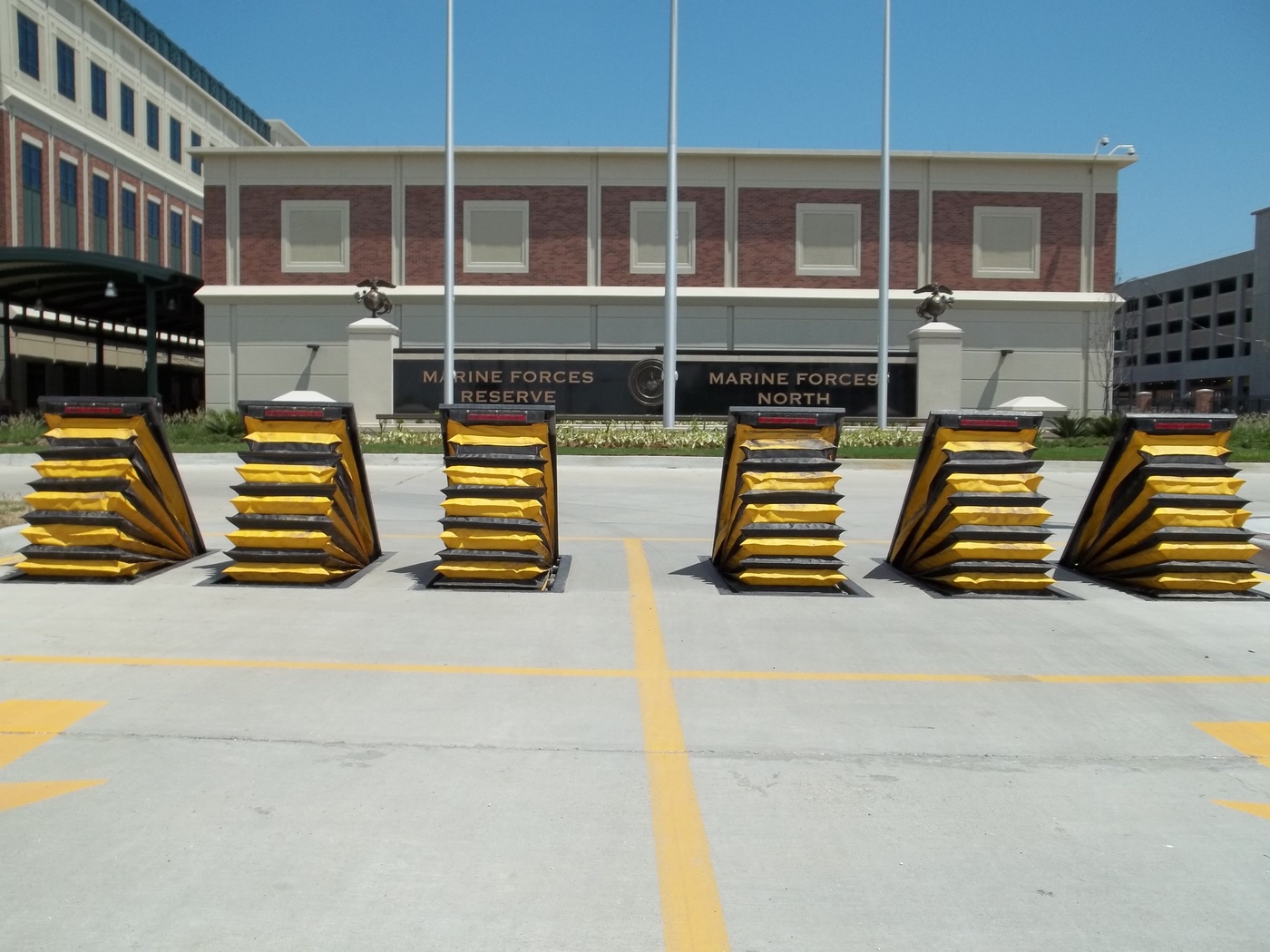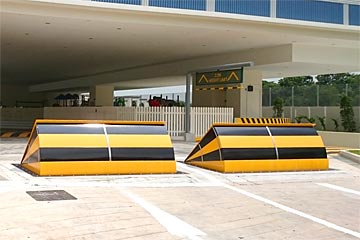Some Known Details About Wedge Barriers
Wedge Barriers Things To Know Before You Get This

The Facts About Wedge Barriers Revealed
The continuing to be force applied to
the cam web cam deploy the wedge plate 16 may be provided supplied an electromechanical actuator 84 or other various other. The springtime setting up 54 and the actuator 84(e. Wedge Barriers. g., electromechanical actuator)may run with each other to convert the web cam and lift the wedge plate 16.
As pointed out above, the spring assembly 54 applies a consistent pressure on the camera, while the electromechanical actuator might be controlled to exert a variable pressure on the camera, thereby enabling the lifting and reducing( i. e., deploying and withdrawing )of the wedge plate 16. In particular embodiments, the constant pressure applied by the spring assembly 54 may be adjustable. g., electromechanical actuator) is handicapped. As will be valued, the spring setting up 54 might be covered and shielded from debris or other components by a cover plate(e. g., cover plate 68 displayed in FIG. 4) that might be substantially flush with the raised surface area 38 of the structure 14. As discussed above, in the released placement, the wedge plate 16 serves to block gain access to or traveling beyond the barrier 10. The barrier 10(e. g., the wedge plate 16 )may obstruct pedestrians or cars from accessing a residential or commercial property or path. As talked about over, the barrier 10 is connected to the support 30 safeguarded within the structure 14,

front braces 71. Therefore, the affiliation assemblies 72 may pivot and turn to allow the collapse and extension of the link settings up 72 during retraction and deployment of the bather 10. The linkage assemblies 72 reason motion of the wedge plate 16 to be restricted. As an example, if a vehicle is taking a trip towards the deployed wedge plate 16(e. For instance, in one situation, the safety legs 86 might be expanded duringmaintenance of the barrier 10. When the security legs 86 are deployed, the safety and security legs 86 sustain the weight of the wedge plate look at this now 16 versus the surface 12. As a result, the lifting system 50 may be shut off, serviced, eliminated, changed, and so forth. FIG. 5 is partial viewpoint view of an embodiment of the surface-mounted wedge-style obstacle 10, showing the web cam 80 and the web cam surface areas 82 of the training system 50. Specifically, two webcam surface areas 82, which are described as reduced web cam surface areas 83, are placed listed below the camera 80. The lower cam surface areas 83 might be fixed to the surface 12 (e. For instance, the lower cam surfaces 83 and the installing plate 85 may form a single piece that is safeguarded to the anchor 30 by bolts or other mechanical fasteners. In addition, two webcam surfaces 82, which are referred to as top camera surfaces 87, are placed over the camera 80 and combined to (e. In other personifications, intervening layers or plates may be positioned between the surface area 12 and the reduced web cam surfaces 83 and/or the wedge plate 16 and the top cam surfaces 87 As stated over, the camera
80 converts along the cam surfaces 82 when the wedge plate 16 is raised from the retracted placement to the released position. Furthermore, as discussed over, the springtime setting up 54 (see FIG. 3 )might offer a force acting upon the cam 80 in the direction 102 using springtime rod 58, which may reduce the pressure the electromechanical actuator 84 is called click to read for to relate to the web cam 80 in order to like it actuate and lift the wedge plate 16. 1 )to the deployed placement(see FIG. 4). As shown, the cam 80 includes track wheels 104(e. g., rollers), which contact and convert along the cam surface areas 82 during procedure.